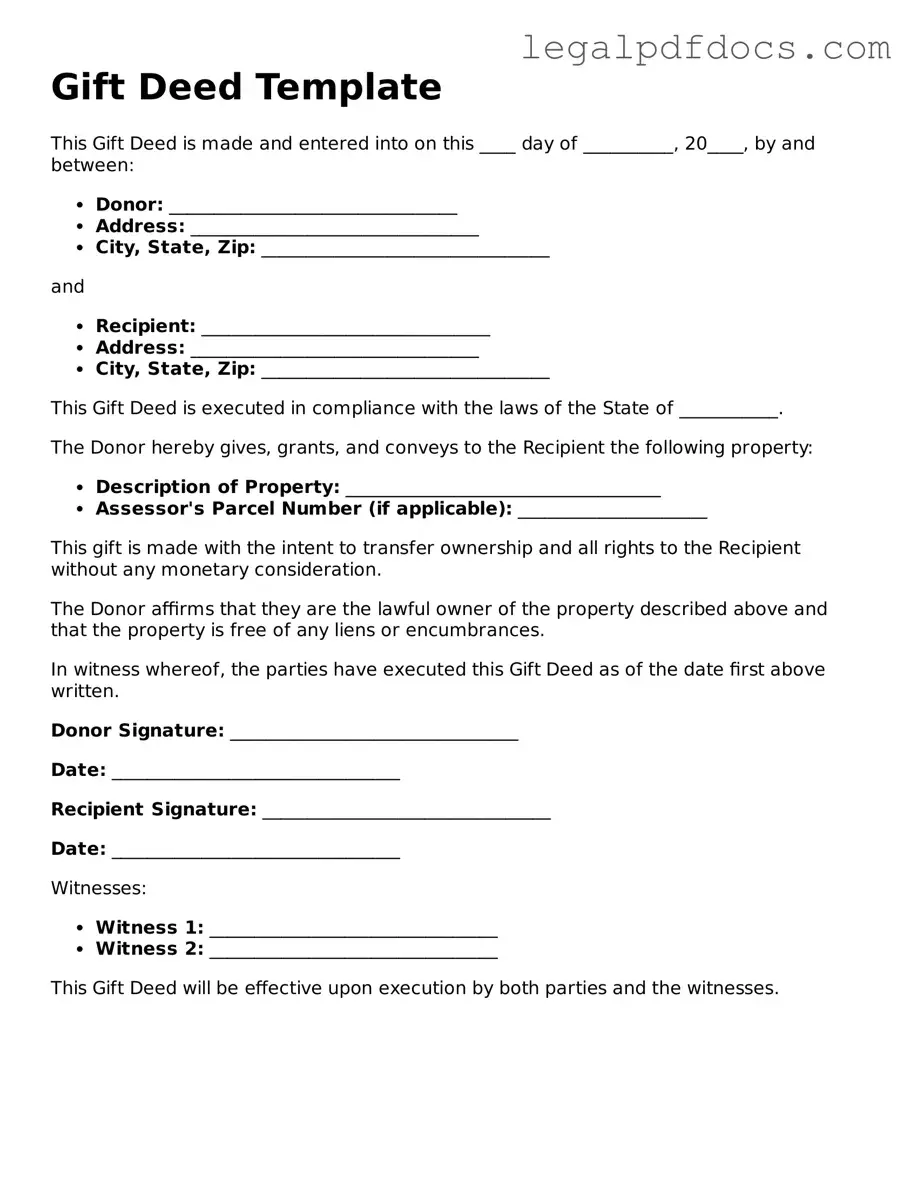The Gift Deed form serves as a crucial legal instrument in the transfer of property or assets without any exchange of monetary compensation. This form is often utilized when an individual wishes to donate property to another person, typically a family member or a friend, as a gesture of goodwill. Key components of the Gift Deed include the identification of the donor and the recipient, a detailed description of the property being gifted, and the explicit intention to make the gift without any conditions. Additionally, the form may require the signatures of witnesses to validate the transaction. Understanding the nuances of this form is essential, as it outlines the rights and responsibilities of both parties involved. Proper execution of a Gift Deed can help prevent future disputes and ensure that the transfer is legally recognized. As such, it is important for individuals to be aware of the implications and requirements associated with this type of deed.
